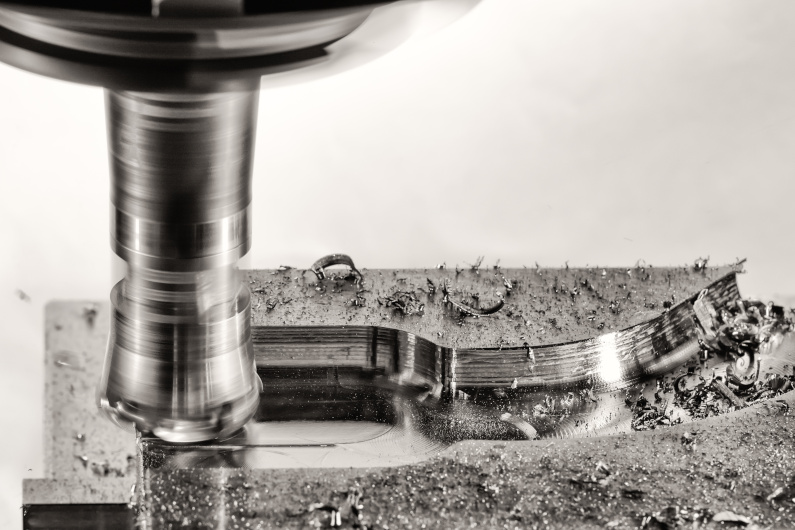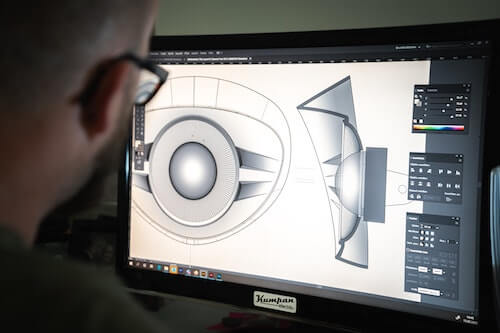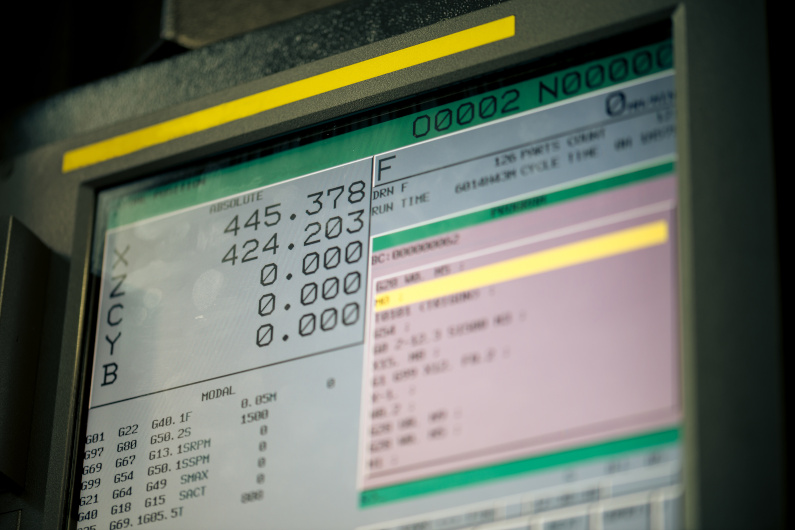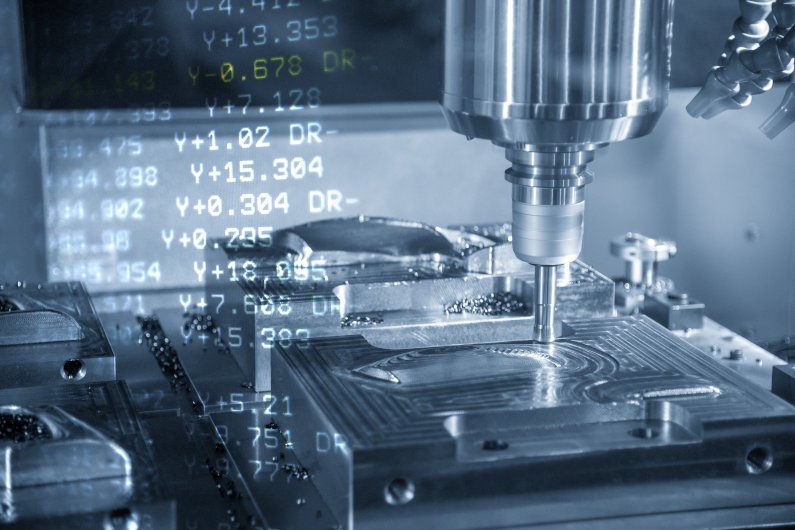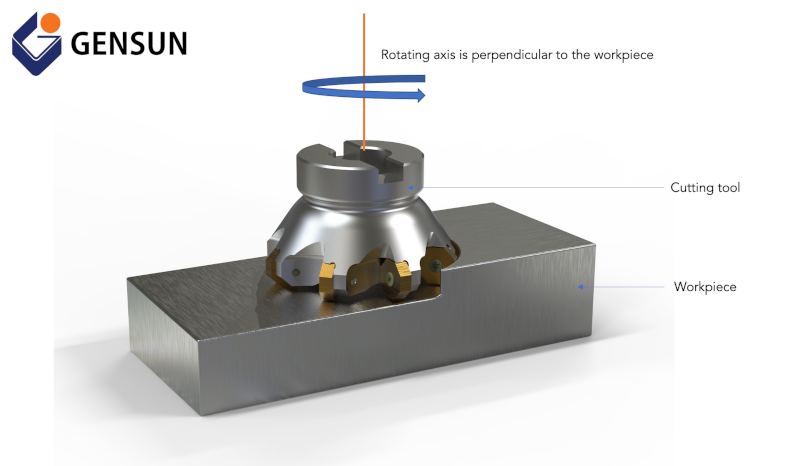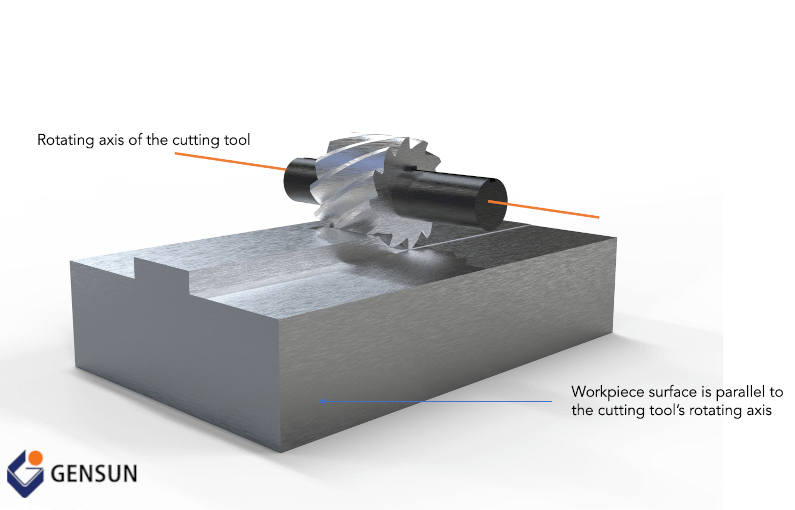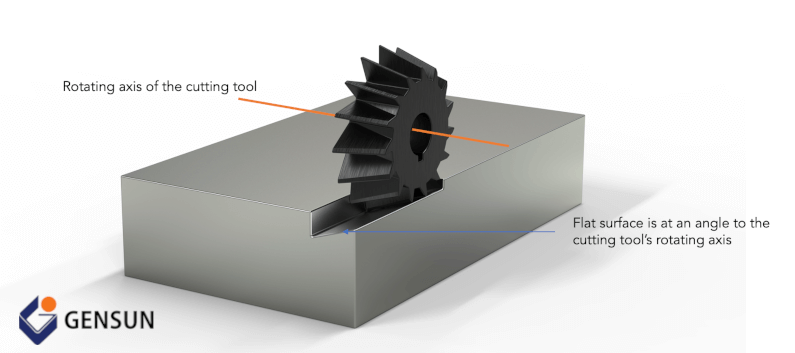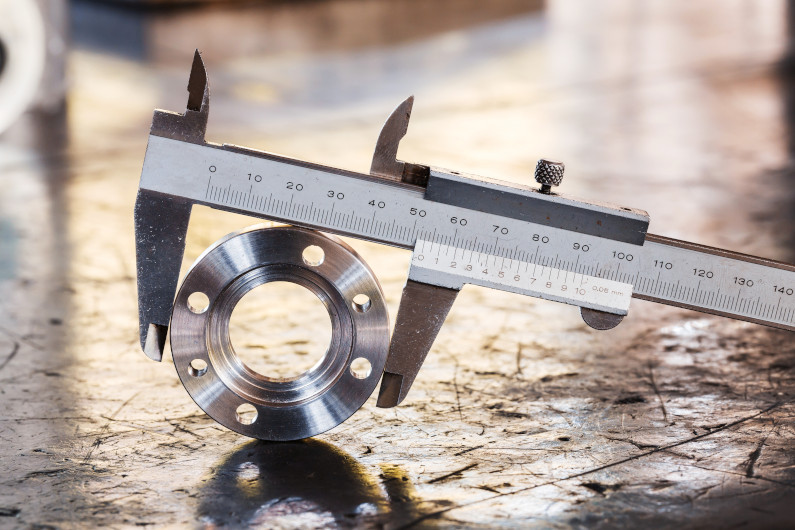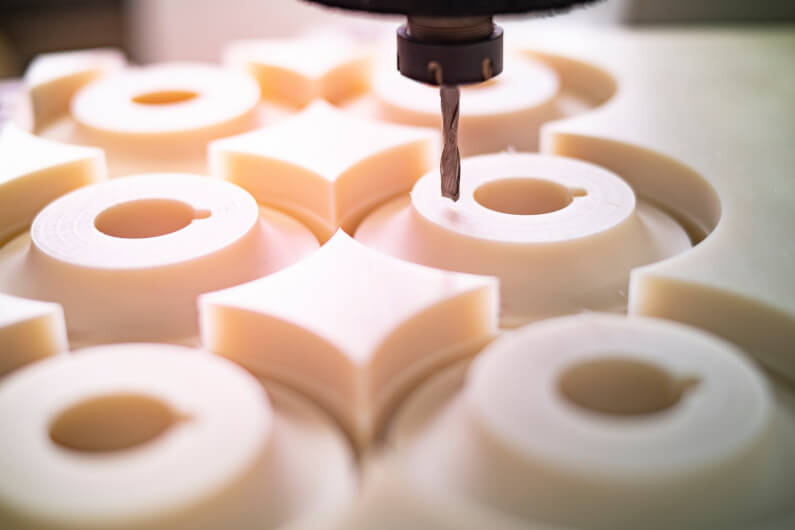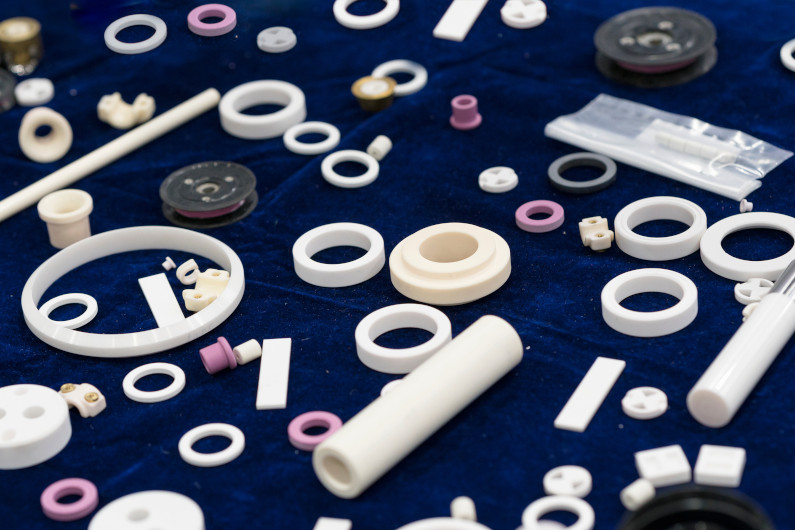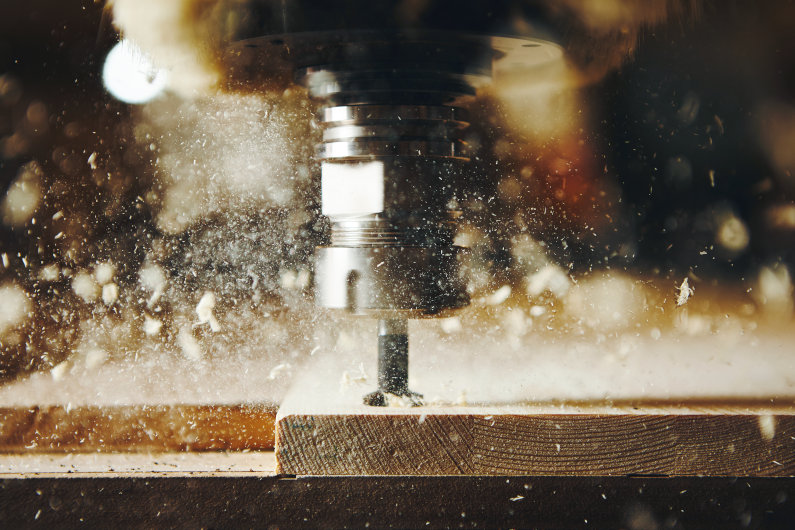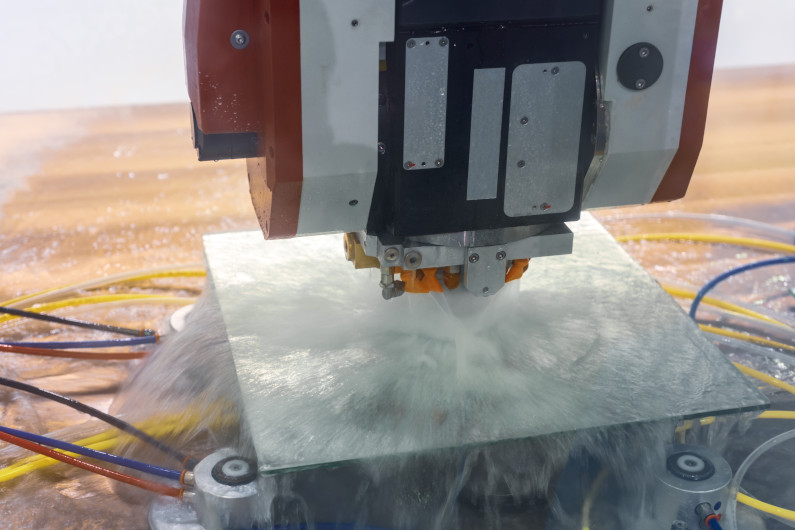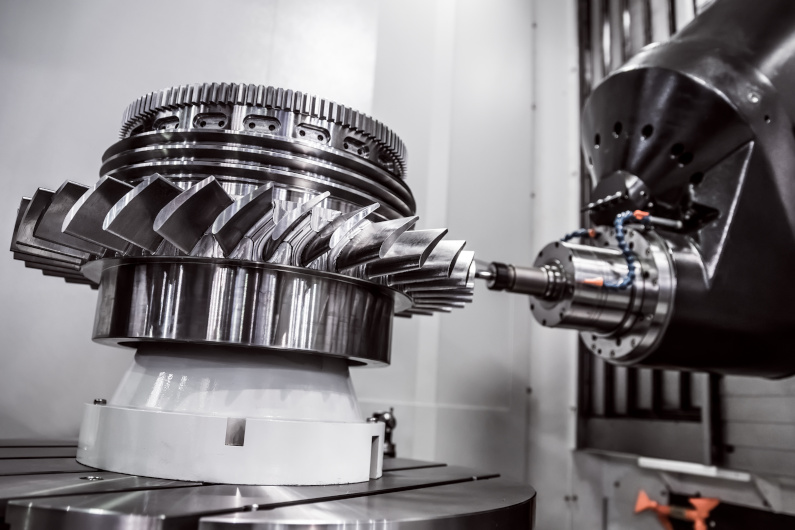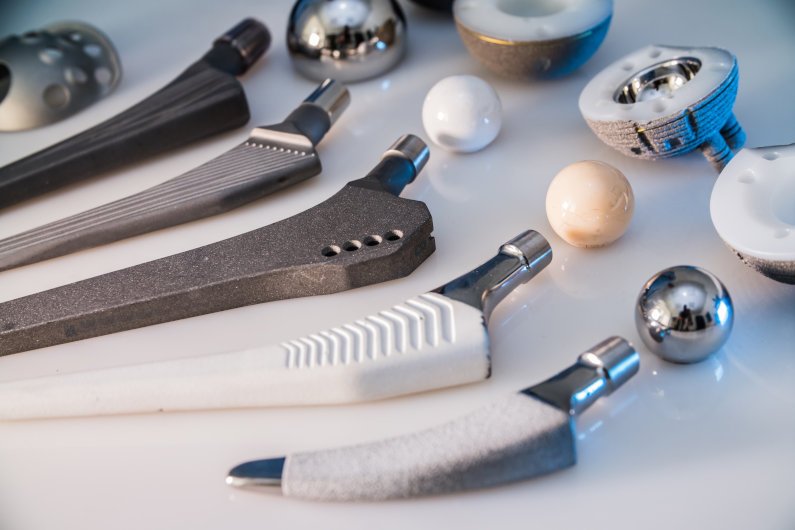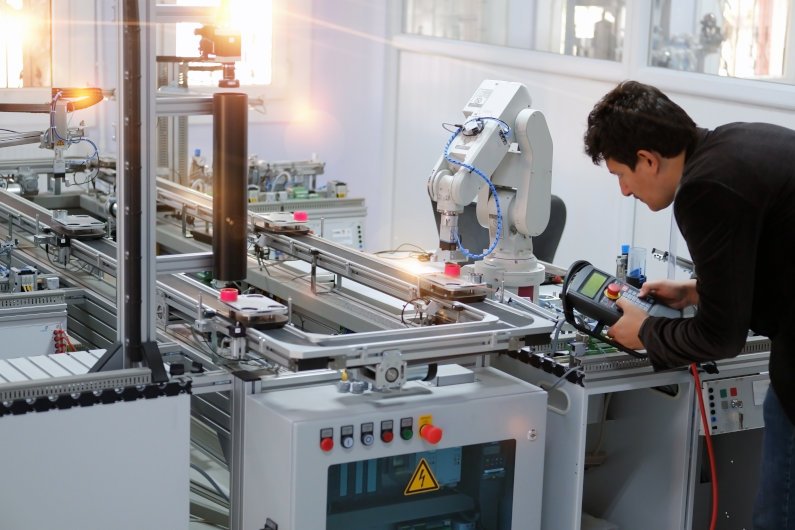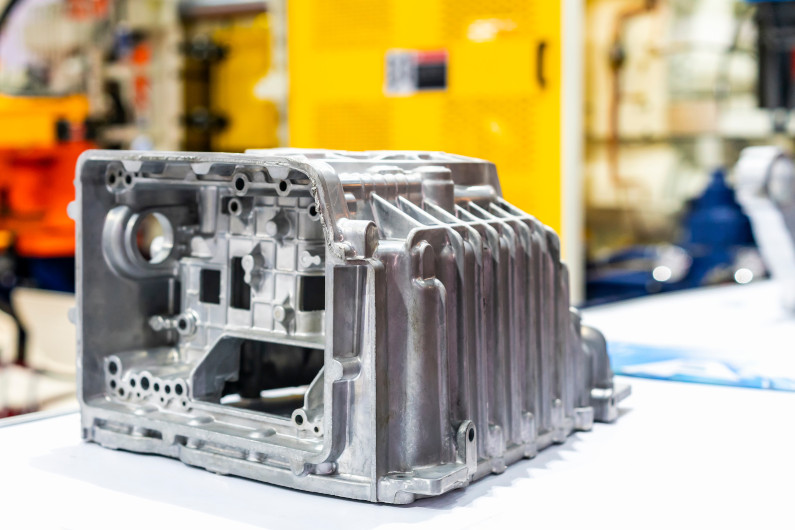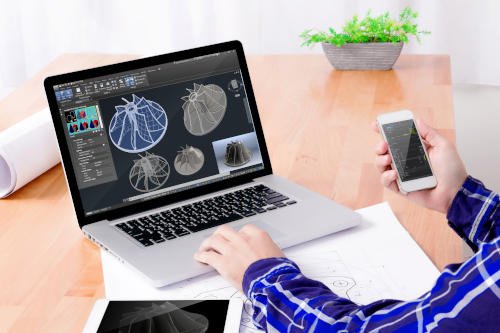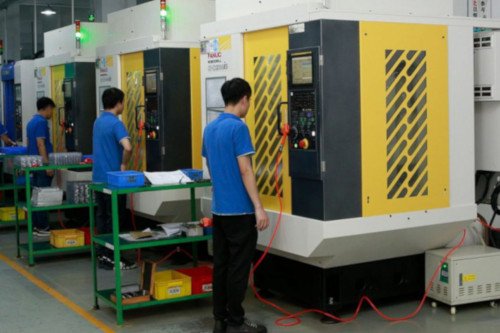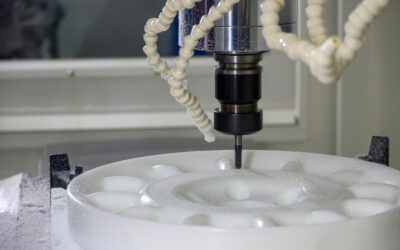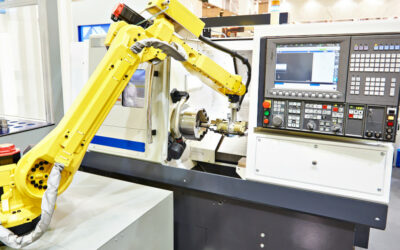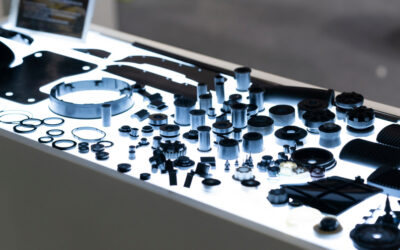CNC milling is a CNC process that involves the use of rotating cutters to remove portions of a block of material (or workpiece) till the desired custom shape (or feature) is made. It allows manufacturers to create intricate parts accurately while meeting tight tolerance requirements.
Computer numerical control (CNC) milling machines have evolved over the years, allowing for the creation of precision parts that meet the stringent requirements of today’s demanding industries. The applications of CNC milling machines are near-endless, spanning across many industries like the aerospace, automotive, robotics, and medical industries, to name a few.
This article will get down to the nitty-gritty of CNC milling. Do you want to know about the milling process? The types of milling operations? The advantages of the process? You’ve come to the right place.
What is a CNC Milling Machine?
To understand what a CNC milling machine is and how it operates, let’s get back to the basics of milling. Milling is a machining process that involves the use of rotating cutters to remove portions of a block of material (or workpiece) till the desired custom shape (or feature) is made.
Conventional milling machines typically feature a moveable tabletop (or clamping device) that holds the workpiece in place, allowing machine operators to move the workpiece in different directions against the rotating cutter.
Like the conventional milling machines, CNC milling machines also rely on a moveable tabletop and rotating cutters to remove materials and create parts. However, they differ in the mode by which these machining operations are carried out.
CNC milling machines use computerized controls to carry out machining operations, whereas conventional milling requires manual operation of the rotating cutter to create parts.
Let’s take a look at the milling process in more detail.
The CNC Milling Process
We can divide this process into three stages.
Stage #1 Create a 2D or 3D CAD Model
The first step of the CNC milling process is to create 3D (or 2D) drawings of your desired part using CAD/CAM software like Autodesk Inventor, Fusion 360, and SolidWorks. These computer-aided design (CAD) or computer-aided manufacturing (CAM) tools allow you to specify your dimensions and tolerance requirements.
Stage #2 Convert the CAD Model to a CNC program
Export your CAD model into a CNC-compatible file using the CAM software we mentioned in stage #1. CAM tools have functionalities that allow you to convert your 3D CAD model into a computer program called G-code.
The G-code then automates all the actions necessary to fabricate your part, for example, the cutting sequence, toolpath, machine tool speed, workpiece movement, to name a few.
Stage #3 Setup the CNC Milling Machine and Execute Milling Operation
This is the phase where you insert your workpiece into the CNC machine work surface, attach your cutting tools into the spindle of the CNC machine, and download the G-code you already created in stage #2.
Once all these steps have been completed, proceed to initiate the machining program. And the milling machine will perform all operations needed to turn your workpiece into your desired part.
3 Common CNC Milling Operations
Following are some of the most common milling operations used today.
#1 Face Milling
Face milling is arguably the most common type of milling operation used for creating flat surfaces. This machining operation is done such that the rotating axis of the cutting tool is perpendicular to the surface of the workpiece being machined.
As the name suggests, face milling operation involves the use of a face mill cutter. These cutters have multiple interchangeable cutter inserts, allowing you to produce your desired surface efficiently in one pass.
Compared to peripheral milling, face milling can also help you achieve higher-quality surface finishes. This is because the design of the face mill cutter gives you close control of the machining operation, allowing you to remove a smaller amount of material compared to peripheral milling.
Learn More: Face Milling 101
#2 Plain Milling
Plain milling, also called slab milling, is a milling operation used to produce plain, horizontal surfaces. The machining operation is done such that the axis of the cutting tool is parallel to the surface being machined.
The process uses a special type of cutter (plain milling cutters) that have their teeth on the periphery, allowing machinists to perform cutting operations.
Learn More: Understand Plain Milling
#3 Angular Milling
Like plain milling, angular milling also helps you to create flat surfaces. These two operations only differ in the way the cutting tool is set.
In angular milling, the axis of the cutting tool is at an angle to the surface of the workpiece. This allows you to make features like grooves, serration, and chamfer.
Learn More: Understand Angular Milling
Some Advantages of CNC Milling
- CNC milling machines offer higher accuracy and precision compared to many modern-day manufacturing technologies.
- Multiple-axis CNC machines can create extremely complex geometries while meeting tolerance requirements as tight as +/-0.004mm.
- CNC machines are compatible with a wide range of materials, including plastic, composites, and metals.
Learn More: The Advantages and Disadvantages of CNC Milling
Material Considerations in CNC Milling
Materials for CNC milling generally fall into three major categories: plastics, soft metals, and hard metals. Some material examples include aluminum, bronze, copper, ceramics, plywood, steel, stone, wood, and zinc.
Metals
Both soft and hard metals are used in CNC milling. Soft metals like aluminum and bronze are ideal for CNC milling because they chip easily and are corrosion-resistant. They are commonly used in the production of aircraft fittings, architectural materials, medical components, gears, shafts, and more. Hard metals like steel and stainless steel are popular alternatives to aluminum for CNC machining. Because of their strength and temperature resistance, they are relatively easy to work with.
Plastics
Plastics are another common material used in CNC milling. They are lightweight, corrosion-resistant, and can be molded into complex shapes. They are often used in industries such as automotive, medical, and consumer goods.
Ceramics
Ceramics are used in CNC milling for their hardness, heat resistance, and electrical insulation properties. They are often used in industries such as aerospace, automotive, and medical.
Wood and Plywood
Wood and plywood are used in CNC milling for their ease of cutting and shaping. They are often used in industries such as furniture manufacturing and construction.
Glass
Glass is used in CNC milling for its transparency, heat resistance, and electrical insulation properties. It is often used in industries such as electronics, automotive, and medical.
Composites
Composites are used in CNC milling for their strength, lightweight, and corrosion resistance. They are often used in industries such as aerospace, automotive, and marine.
Choosing the Right Material for Your Project
When selecting a material for a milling application, several factors should be considered. These include the material’s machinability, the desired properties of the final product (such as strength, weight, and corrosion resistance), the production volume, and the cost of the material.
For example, if a high production volume is required, a material that is easy to machine and relatively inexpensive would be ideal. On the other hand, if the final product needs to have high strength and corrosion resistance, a hard metal or composite might be the best choice.
CNC Milling Applications
CNC milling is one of the most accurate manufacturing techniques, making it ideal for creating complex designs. Its applications span across a wide range of industries and products. Here are some common uses for CNC milling:
Aerospace Components
The aerospace industry requires parts that are both lightweight and durable. CNC milling is used to create intricate components that can withstand the harsh conditions of space travel. These components include engine parts, structural parts, and other intricate components.
Medical Components
The medical industry requires parts that are precise and reliable. CNC milling is used to create medical devices and components, such as surgical instruments, implants, and medical machinery parts.
Robotics
In the field of robotics, CNC milling is used to create precise and complex parts that are needed for robots. This can include everything from structural components to intricate gears and mechanisms.
Automotive
In the automotive industry, CNC milling is used to create parts for vehicles. This can include everything from engine components to body parts.
CNC milling is a versatile manufacturing technique that can be used to create a wide range of products across many industries. Its ability to create precise and complex parts makes it a popular choice for many manufacturers.
Designing for Manufacturability in CNC Milling
Designing for manufacturability (DFM) in CNC milling involves creating a design that is easy to produce and cost-effective. This includes considering the part size, standardization, and material selection.
Part Size
The size of the part can significantly impact the cost and feasibility of CNC milling. Larger parts require more material and time to machine, increasing the cost. On the other hand, very small parts can be challenging to machine accurately. Therefore, it’s essential to design parts that are within the capabilities of the CNC milling machine.
Standardization
Standardization can also reduce the cost of CNC milling. This involves designing parts that can be made using standard tool sizes and avoiding complex features that require specialized tooling. For example, adding internal corner radii to the parts, avoiding thin walls and sections of a part, and opting for bigger features instead of smaller ones can help reduce the cost and complexity of the milling process.
Conclusion
Without a doubt, CNC machines can accurately create complex geometries and meet tight tolerances. But like with other machining technologies, the success of your CNC milling project primarily depends on your CNC milling machine operators, technicians, and engineers. That’s why you must find the right manufacturer for your project.
Gensun Precision Machining is a leading provider of CNC machining services across the globe. We have a team of highly qualified technicians and engineers to help you create the parts you need.
Learn more about our CNC milling services.

